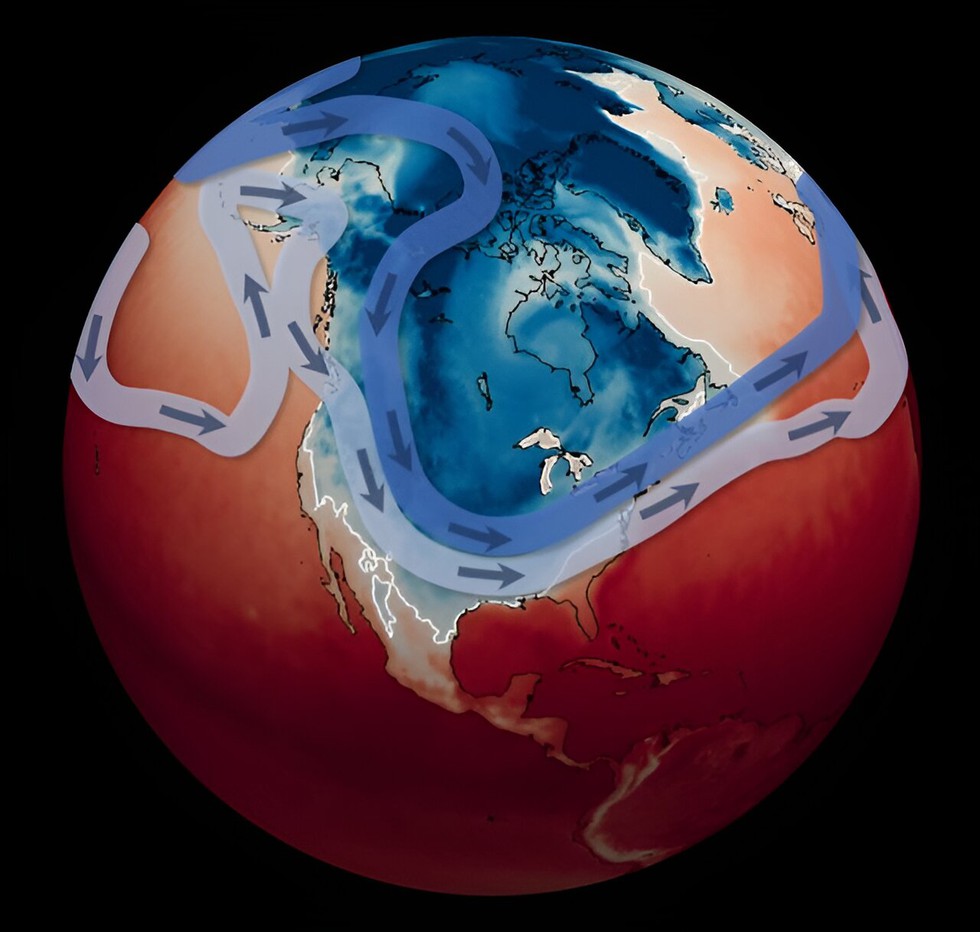About Polar Vortex:
- The polar vortex is a large area of low pressure and cold air surrounding both of the Earth’s poles. It weakens in summer and strengthens in winter.
- The term "vortex" refers to the counter-clockwise flow of air that helps keep the colder air near the poles.
- Many times, during winter in the northern hemisphere, the polar vortex will expand, sending cold air southward with the jet stream.
- This occurs fairly regularly during wintertime and is often associated with large outbreaks of Arctic air in the United States and Canada.
- Portions of Europe and Asia also experience cold surges connected to the polar vortex.
- The polar vortex extends from the tropopause (the dividing line between the stratosphere and troposphere) through the stratosphere and into the mesosphere (above 50 km).
- Low values of ozone and cold temperatures are associated with the air inside the vortex.
Key Facts about Jet Streams:
- Jet streams are narrow bands of strong wind that generally blow from west to east all across the globe.
- Earth has four primary jet streams: two polar jet streams, near the north and south poles, and two subtropical jet streams closer to the equator.
- What Causes Jet Streams?
- Jet streams form when warm air masses meet cold air masses in the atmosphere.
- The sun doesn’t heat the whole earth evenly. That’s why areas near the equator are hot and areas near the poles are cold.
- So, when Earth’s warmer air masses meet cooler air masses, the warmer air rises higher in the atmosphere while cooler air sinks to replace the warm air.
- This movement creates an air current or wind. A jet stream is a type of air current that forms high in the atmosphere.
- Since these hot and cold air boundaries are most pronounced in winter, jet streams are the strongest during both the northern and southern hemisphere winters.
- On average, jet streams move at about 110 miles per hour.
- They are located about five to nine miles above Earth’s surface in the mid to upper troposphere, the layer of Earth’s atmosphere where we live and breathe.
